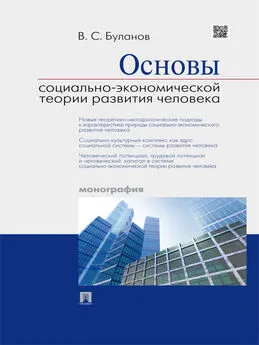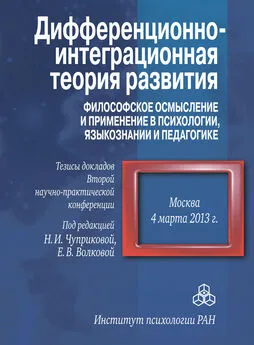Роберт Тайсон - ПСИХОАНАЛИТИЧЕСКИЕ ТЕОРИИ РАЗВИТИЯ
- Название:ПСИХОАНАЛИТИЧЕСКИЕ ТЕОРИИ РАЗВИТИЯ
- Автор:
- Жанр:
- Издательство:Деловая книга
- Год:1998
- Город:М.
- ISBN:5-88687-019-9
- Рейтинг:
- Избранное:Добавить в избранное
-
Отзывы:
-
Ваша оценка:
Роберт Тайсон - ПСИХОАНАЛИТИЧЕСКИЕ ТЕОРИИ РАЗВИТИЯ краткое содержание
Авторы книги, крупнейшие американские психоаналитики, особое внимание уделяют эго-психологии, одному из самых популярных направлений в современном психоанализе. Изданная во многих странах мира, данная книга — новейший свод психоаналитических теорий развития — стала настольной для профессиональных психотерапевтов, психологов и студентов.
ПСИХОАНАЛИТИЧЕСКИЕ ТЕОРИИ РАЗВИТИЯ - читать онлайн бесплатно ознакомительный отрывок
Интервал:
Закладка:
Sander, L. W. (1969). Regulation and organization in the early infant-caretaker system. In Brain and early behavior, ed. R. Robinson. London: Academic Press, pp. 311-332.
Sander, L. W. (1975). Infant and carctaking environment: Investigation and conceptualization of adaptive behavior in a system of increasing complexity. In Explorations in child psychiatry, ed. E. J. Anthony. New York: Plenum, pp. 129-166.
Sander, L. W. (1980). Investigation of the infant and its caretaking environment as a biological system. In The course of life. Vol. I, ed. S. 1. Greenspan and G. H. Pollock. Publication No. (ADM) 80-786. Washington, D.C.: DHHS.pp. 177-201.
Sander, L. W. (1983). Polarity, paradox, and the organizing process in development. In Frontiers of infant psychiatry, ed. J. D. Call, E. Galenson, and R. L. Tyson. New York: Basic Books, pp. 333-346.
Sander, L. W.; Stechler, G.; Burns, P.; andJulia, H. (1970). Early mother-infantinteraction and 24-hour patterns of activity and sleep. Amcr. Acad. Child Psychiat., 9:103-123.
Sander, L. W.; Stechler, G.; Burns, Р.; and Lee, A. (1979). Change in infant and caregiver variables over the first two months of life: Integration of action in early development. In Origins of the infant's social responsiveness, ed. E. Thoman. Hilisdale, N. J.: Eribaum, pp. 21-28.
Sandier, A.-M. (1975). Comments on the significance of Piaget's work for psychoanalysis. Int. Rev. Psychoanal., 2:365-378.
Sandier, A.-M. (1977). Beyond eight — month anxiety, Int.]. Psychoanal., 58:195-208.
Sandier, J. (196Qa). On the concept of the superego. Psychoanal. Study Child, 15:128-162.
Sandier, J. (1960b). The background of safety. Int.]. Psychoanal., 41:352-356.
Sandier, J. (1974). Psychological conflict and the structural model: Some clinical and theoretical implications. Int.]. Psychoanal., 55:53-72.
Sandier, J. (1981). Character traits and object relationships. Psychoanal. Q., 50:694-708.
Sandier, J. (1983). Reflections on some relations between psychoanalytic concepts and psychoanalytic practice, Int. J. Psychoanal., 64:35-45.
Sandier, J. (1985). Towards a reconsideration of the psychoanalytic theory ofmotivation. Bull. Anna Freud Centre, 8:223-244.
Sandier, J. ( 1987). The concept of projective identification. In Projection, identification, projection identification, ed. J. Sandier. Madison, Conn.: Int. Univ. Press, pp. 13-26.
Sandier, J., and Dare, C. (1970). The psychoanalytic concept of oralityty. Psychosom. Res., 14:211-222.
Sandier, J.; Dare, C.; and Holder, A. (1972). Frames of reference: The historical context and phases in the development of psychoanalysis. Brit. j. Med. Psychol., 45:133-142.
Sandier, J., and Freud, A. (1985). The analysis of defense: The ego and the mechanisms of defense revisited. New York: Int. Univ. Press.
Sandier, J.; Holder, A.; and Meers, D. (1963). The ego ideal and the ideal self. Psychoanal. Study Child, 18:139-158.
Sandier, J., and Joffe, W. G. (1969). Towards a basic psycho-analytic model. Int. J. Psychoanal., 50:79-90.
Sandier, J., and Rosenblatt, B. (1962). The concept of the representational world. Psychoanal. Study Child, 17:128-145.
Sandier, J., and Sandier, A.-M. (1978). On the development of object relationships and affects, Int. J. Psychoanal., 59:285-296.
Sarnoff, C. (1976). Latency. New York: Aronson.
Schafer, R. (1960). The loving and beloved superego in Freud's structural theory. Psychoanal. Study Child, 15:163-190.
Schafer, R. (1974). Problems in Freud's psychology of women. J. Amer. Psychoanal. Assn., 22:459-485.
Schafer, R. (1976). A new language for psychoanalysis. New Haven: Yale Univ. Press.
Scharfman, M. (1988). History of child analysis. Paper presented to workshop on the Significance of Child and Adolescent Analysis for Clinical Work with Adults. American Psychoanalytic Association, New York City, November.
Schulman, A. H., and Kaplowitz, C. (1977). Mirror — image response during the first two years of life. Developmental Psychology, 10:133-142.
Schur, M. (1960). Discussion of Dr. John Bowlby's paper. Psycho-anal. Study Child, 15:63-84.
Schur, M. (1966). The id and the regulatory principles of mental functioning. New York: Int. Univ. Press.
Schur, M. (1969). Affects and cognition, Int. J. Psychoanal., 50:647-653.
Schwartz, A. (1987). Drives, affects, behavior — and learning: Approaches to a psychobiology of emotion and to an integration of psychoanalytic and neurobiologic thought. Amer. Psychoanal. Assn., 35:467-506.
Schwartz, L. (1978). Book review: The restoration of the self. Psychoanal. Q., 47:436-443.
Segal, H. (1978). On symbolism, int.]. Psychoanal., 59:315-319.
Segal, H. (1979). Klein: Theories and techniques of the pioneer of child analysis. London: Harvester Press.
Settlage, C.F. (1971). On the libidinal aspect of early psychic development and the genesis of infantile neurosis. In Separation — individuation: Essays in honor of Margaret S. Mahler, ed. J. B. McDevitt and C. F. Settlage. New York: Int. Univ. Press, pp. 131-154.
Settlage, C. F. (1975). On the aggressive aspects of early psychic development and the genesis of the infantile neurosis. Unpublished paper.
Settlage, C. F. (1980). The psychoanalytic theory and understanding of psychic development during the second and third years of life. In Infancy and early childhood. Vol. I of The course of
life, ed. S. 1. Greenspan and G. H. Pollock. Publication No. (ADM) 80-786. Washington, D.C.: DHHS, pp. 523-539.
Settlage, C. R; Curtis, Z.; Lozoff, M.; Silberschatz, G.; and Simburg, E. (1988). Conceptualizing adult devclopment.y. Amer. Psychoanal. Assn., 36:347-370.
Settlage, C. R; Kramer, S.; Belmont, H. S.; et al. (1977). Child analysis. In Psychoanalytic education and research: The current situation and future possibilities, ed. S. Goodman. New York: Int. Univ. Press, pp. 49-102.
Shapiro, T. (1979). Clinical psycholinguistics. New York: Plenum.
Shapiro, Т., and Perry, R. (1976). Latency revisited. Psychoanal. Study Child, 31:79-105. Shengold, L. (1980). Some reflections on a case of mother — adolescent son incest. Int. J. Psychoanal., 61:461-476.
Shengold, L. (1989). Soul murder. New Haven: Yale Univ. Press.
Shereshefsky, P. M., and Yarrow, L. J. (1973). Psychological aspects of a firstpregnancy and early postnatal adaptation. New York: Raven Press.
Shopper, M. (1979). The (re)discovery of the vagina and the importance of the menstrual tampon. In Female adolescent development, ed. M. Sugar. New York: Bninner/Mazel, pp. 214-233.
Sifneos, P. (1974). A reconsideration of psychodynamic mechanisms inpsychosomatic symptom formation in view of recent clinical observations. Psychother. Psychosom., 24:151-155.
Silverman, M. A. (1971). The growth of logical thinking: Piaget's contribution to ego psychology. Psychoanal. Q., 40:317-341.
Silverman, M. A. (1981). Cognitive development and female psychology. J. Amer. Psychoanal. Assn., 29:581-605.
Slap, J. (1977). The eroding concept of intrapsychic conflict. Int. J. Psychoanal. Psychother., 6:469-477.
Slap, J. W., and Levine, R J. (1978). On hybrid concepts in psychoanalysis. Psychoanal. Q., 47:499-523.
Socarides, C. W. (1978). Homosexuality. New York: Aronson.
Solnit, A.J. (1979). Psychosexual development: Three to five years. In Basic handbook of child psychiatrj. Vol. I, ed. J. D. Noshpitz et al. New York: Basic Books, pp. 178-183.
Solnit, A. J. (1987a). A psychoanalytic view of play. Psychoanal. Study Child, 42:205-219.
Solnit, A. J. (1987b). Review of The interpersonal world of the infant, by Daniel Stern. J. Amer. Psychlat. Assn., 144:1508-1509.
Solnit, A. J., and Neubauer, P. B. (1986). Object constancy and early triadic relationships. Amer. Acad. Child Psychlat., 25:23-29.
Sorce, J. F; Ernde, R. N.; and Klinnert, M. (1981). Maternal emotional signaling: Its effect on the visual — cliff behavior ofone — vear — olds. Paper presented at the meeting of the Society for Research in Child Development, Boston, Mass.
Spillius, E. B. (1983). Some developments from the work of Melanie Klein. Int. J. Psychoanal., 64:321-332.
Spitz, R. A. (1945). Hospitalism: An inquiry into the genesis of psychiatric conditions in early childhood. Psychoanal. Study Child, 1:53-72.
Spitz, R. A. (1946a). Anaclitic depression: An inquiry into the genesis of psychiatric conditions in early childhood. Psychoanal. Study Child, 2:313-342.
Spitz, R. A. (1946b). Hospitalism: A follow — up report. Psychoanal. Study Child, 2:113-117.
Spitz, R. A. (1947). Grief, a peril in infancy. Film, New York Film Library. Cited in Spitz and Cobliner, 1965.
Spitz, R. A. (1950). Anxiety in infancy: A study of its manifestations in the first year of life. Int. J. Psychoanal., 31:138-143.
Spitz, R. A. (1952). Authority and masturbation: Remarks on bibliographical investigation. Psychoanal. Q., 21:490-527.
Spitz, R. A. (1953). Aggression: Its role in the establishment of object relations. In Drives, affects, behavior, ed. R. Loewenstein. New York: Int. Univ, Press, pp. 126-138.
Spitz, R. A. ( 1957). No and yes: On the genesis of human communication. New York: Int. Univ. Press.
Spitz, R. A. (1958). On the genesis of superego components. Psychoanal. Study Child, 13:375-404.
Spitz, R. A. (1959). A genetic field theory of ego formation: Its implications for Pathology. New York: Int. Univ. Press.
Spitz, R. A. (1960). Discussion of Dr. John Bowlby's paper. Psychoanal. Study Child, 15:85-94.
Spitz, R. A. (1962). Auterotism reexamined. Psychoanal. Study Child, 17:283-315.
Spitz, R. A. (1963). Life and the dialogue. In Counterpoint: Libidinal object and subject, ed. H. S. Gaskill. New York: Int. Univ. Press, pp. 154-176.
Spitz, R. A. (1964). The derailment of dialogue: Stimulus overload, active cycles, and the completion gradient. Amer. Psychoanal. Assn., 12:752-775.
Spitz, R. A. (1965). The evolution of dialogue. In Drives, affects, behavior. Vol. 2, ed. M. Schur. New York: Int. Univ. Press, pp. 170-1.90.
Spitz, R. A., and Cobliner, W. G. (1965). Thefirstyear of life. New York: Int. Univ. Press.
Spitz, R. A.; Ernde, R. N.; and Metcalf, D. R. (1970). Further prototypes of ego formation: A working paper from a research project on early development. Psychoanal. Study Child, 25:417-460.
Spitz, R. A., and Wolf, К. М. (1946). The smiling response. Genetic Psychol. Mono., 34:57-125.
Spitz, R. A., and Waif, K. M. (1949). Auterotism: Some empirical findings and hypotheses on three of its manifestations in the first year of life. Psychoanal. Study Child, 3/4:85-120.
Spruiell, V. (1975). Three strands of narcissism. Psychoanal. (44:577-595.)
Spruiell, V. (1979). Alterations in the ego-ideal in girls in mid-adolescence. In Female adolescent development, ed. Sugar. New York: Brunner/Mazel, pp. 310-329.
Spruiell, V. (1981). The self and the ego. Psychoanal. Q., 50:319-344.
Stechler, G., and Halton, A. (1987). The emergence of assertion and aggression during infancy: A psychoanalytic systems approach. Amer. Psychoanal. Assn., 35:821-838.
Stechler, G., and Kaplan, S. (1980). The development of the self. Psychoanal. Study Child, 35:85-105.
Steele, B. F. (1970). Parental abuseof infants and small children. In Parenthood, ed. E. J. Anthony and T. Benedek. New York: Little, Brown, pp. 449-477.
Steele, B. F. (1983). The effect of abuse and neglect on psychological development. In Frontiers of infant psychiatry, ed. J. D. Call, E. Galenson, and R. L. Tyson. New York: Basic Books, pp. 235-244.
Steele, B. E, and Pollock, С. В. (1968). A psychiatric study of parents who abuse infants and small children. In The battered child, ed. R. E. Heifer and С. Н. Kempe. Chicago: Univ. of Chicago Press, pp. 103-147.
Читать дальшеИнтервал:
Закладка:










